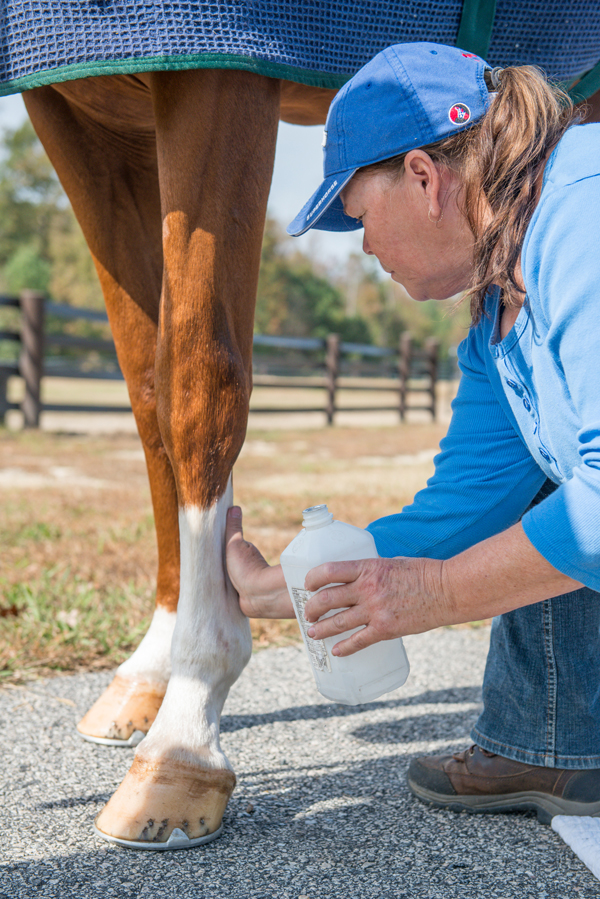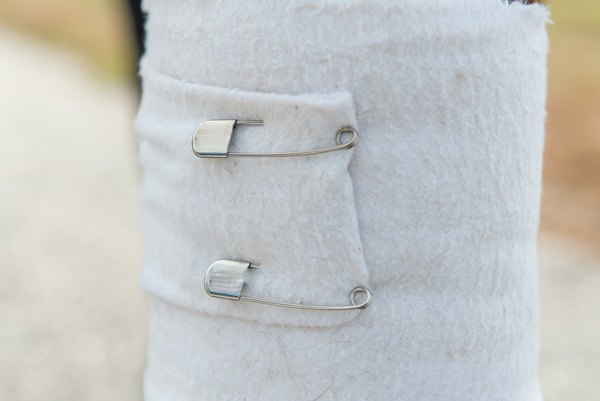The standing wrap is the most basic bandage used on a horse, and one that every horseman should know how to do properly. It’s also important to understand when and why to bandage a horse for his optimal health and well-being.
A standing wrap—which comprises a cotton base or quilted fabric with a bandage to hold it in place and is applied to the horse’s lower leg—is used for a variety of reasons and with or without additional substances on the legs.
A standing wrap on a dry leg is the basic level. It gives your horse’s leg support, provides warmth and promotes circulation to prevent the leg from filling with fluid, commonly called stocking up. This type of application can be used if a horse tends to stock up while standing still, especially after working, or to prepare a conformation hunter who’s showing the following day.
After a dry standing wrap, the next level of support is to add a liniment directly to your horse’s leg under the wrap to help stimulate blood flow. The mildest would be rubbing alcohol or the astringent witch hazel. From there, you can step up the intensity with a specialized brand-name product.
The third level of support is a poultice under a standing wrap to relieve inflammation. Then, for certain special situations where heat is desired, you can employ a sweat. We’ll cover the specific steps of using these products with standing wraps in upcoming articles.
There’s no quick fix to properly applying a standing wrap. Although it’s not overly difficult to master the skill, applying one that’s even from top to bottom, free of wrinkles and not too loose or too tight takes practice … and more practice.
It’s vital to pay close attention to what you’re doing and to be particular about the end result. A loose standing wrap or one that’s applied too tightly or not securely enough can injure your horse.
Today, there are a variety of bandaging products to choose from, but the horsemen of yesteryear used natural products: real cotton, flannel bandages (that they often tore into strips from sheets) and bandage pins. These traditional items are still available and used by many “old-fashioned” horsemen. Most of today’s caretakers prefer synthetic quilted fabric or “no-bow” wraps and synthetic bandages with hook-and-loop fasteners for ease of use, durability and washability.
Whichever products you choose to use, make certain to understand the inherent qualities of each to ensure that you apply them correctly and for the proper situations.
In this article, I’ll show you my method for applying a standing wrap. Also, don’t be afraid to ask someone you know or trust—or who has a history in using wraps—to oversee your initial attempts and offer instruction.
Standard Standing Wrap












Traditional Flannel Bandanges







Laurie Pitts traveled with the U.S. Equestrian Team to the 1978 World Championships in Aachen, Germany, and the first World Cup in 1979 in Sweden. She now co-owns Junior Johnson Training and Sales, a Chesterfield County, Virginia-based business specializing in starting young hunter prospects. She served as the barn manager for George Morris’ first four annual Horsemastership Clinics. She also helps her local Pony Clubbers with their horse care and gives grooming and braiding clinics.
This article originally appeared in the February 2014 issue of Practical Horseman magazine.









